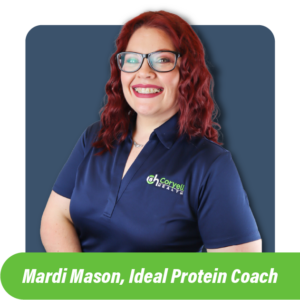Declutter Your Home & Your Mind
The dishes are piling up in the sink, the laundry baskets are overflowing and every surface in your home seems to be covered in clutter (and a thin layer of dust). If even just reading that made you feel stressed, you’re not alone.
Spring cleaning can be tough to tackle, but it’s a great way to create a fresh start, boost your productivity and improve both your mental and physical health. Coryell Health cares about this because according to a 2024 study from the National Cleaning Institute, nearly 9 in 10 Americans feel their best, both mentally and physically, when they have a clean home. The physical act of cleaning may even reduce the risk of experiencing depression or anxiety.
To help get the ball rolling, Coryell Health has compiled a list of cleaning tips and created the ultimate spring cleaning checklist! If you find satisfaction in crossing things off a to-do list, download and print the spring cleaning checklist PDF here.
Coryell Health’s Top Ten Cleaning Hacks
1. Purchase multipurpose cleaning supplies.
By using multipurpose cleaners that apply to various surfaces, you can spend less and create less clutter in your home! Buy in bulk for increased savings and opt for eco-friendly cleaning products without volatile organic compounds and other chemicals that may contribute to headaches and respiratory problems.
2. Invest in organizers.
Having a place for everything in your home is essential, and organizers provide a perfect way to accomplish this. Storage bins and containers allow you to decrease clutter effectively and know where everything in your home belongs. Use a few organizers to store a set of cleaning supplies in each bathroom and other rooms you need to clean regularly, like the kitchen and laundry room.
3. Use the Pomodoro® Technique.
If you find yourself distracted while working on a task, the Pomodoro® Technique may be for you. While cleaning, set a 25-minute timer. Once the timer goes off, take a 5-minute break. After completing this process three more times, give yourself a slightly longer break each time. This method allows you to focus on the task at hand more easily.
4. Determine how much you actually wear your clothes.
Everyone knows about the keep, donate and trash piles when it comes to organizing your closet, but how do you know what clothes you actually wear? Turn all of your hangers in your closet backwards. Each time you wear an item, put it away with the hanger flipped around. This way, you can get an idea of what you actually wear.
5. Get the whole family involved.
Cleaning is a family affair, not a one or two-person game. Create put-away rules for the whole family to maintain a cleaner home with less effort. If you have younger children, gather items in a laundry basket and work together to put each item away.
6. Clean the kitchen sink daily.
The combination of moisture, food particles and other debris in the kitchen sink creates an ideal environment for bacteria to grow. By thoroughly rinsing it with hot water after each use and cleaning it each day, you keep your sink both sparkling clean and bacteria-free.
7. Do 5-minute cleanups every night.
Set a timer for five minutes and hit as many rooms as you can. Only focus on small tasks, like putting a piece of clothing in the right drawer or putting toys away in their basket. It may not seem like much, but it can make a world of difference to “reset” once a day.
8. Create a “junk” basket.
For quick cleanups, choose a basket and put any miscellaneous item you come across in it. When it’s full, find a home for everything in the basket. This way, you won’t get bogged down when you can’t find a place for something as you’re trying to do a quick clean of your home.
9. Invite guests over.
If nothing else will motivate you to clean, this will. By inviting people over, you’re more likely to finish certain cleaning tasks you’ve been putting off. You don’t need to deep clean your home, but it will prompt you to clean a bathroom that guests use, tidy the living room and more.
10. Check things off a to-do list.
Research shows that writing (or typing) down things you have to do unburdens your brain and allows you to be more productive. When you complete an item on your do-list and physically cross it off, it gives you a tangible sense of accomplishment.
Speaking of to-do lists, the checklist below may help you complete your spring cleaning this year. If you’d like to print this checklist with these 10 cleaning tips and tricks on it, click here.
Coryell Health’s Ultimate Spring Cleaning Checklist

Entry Hall
- Declutter closet
- Wash rugs
- Wipe down doors
- Wipe down furniture
- Dust baseboards
- Vacuum floors
Living Room
- Wipe down furniture
- Declutter drawers
- Get rid of unwanted toys
- Clean windows
- Dust blinds
- Dust baseboards
- Vacuum floors
Dining Room
- Declutter and dust cabinets
- Clean windows
- Clean dining room table
- Dust baseboards
- Vacuum floors
Kitchen
- Organize and declutter pantry, cabinets and drawers
- Deep clean appliances
- Clean behind refrigerator and oven
- Dust baseboards
- Vacuum floors
Laundry Room
- Clean washing machine
- Clean lint trap
- Declutter cleaning supplies
- Dust baseboards
- Vacuum floors
Bedrooms
- Declutter closets and drawers
- Dust fans
- Wash bedding
- Clean windows
- Dust baseboards
- Vacuum floors
Bathrooms
Garage
- Declutter storage bins
- Declutter and reorganize outdoor equipment and tools
- Dust shelves
- Sweep floor
With plenty of tips and a checklist in hand, you’re now ready to take on the task of spring cleaning. Take it one step at a time, play music or your favorite podcast and find joy in creating a cleaner space! From all of us at Coryell Health, happy cleaning!
 Skip to content
Skip to content






